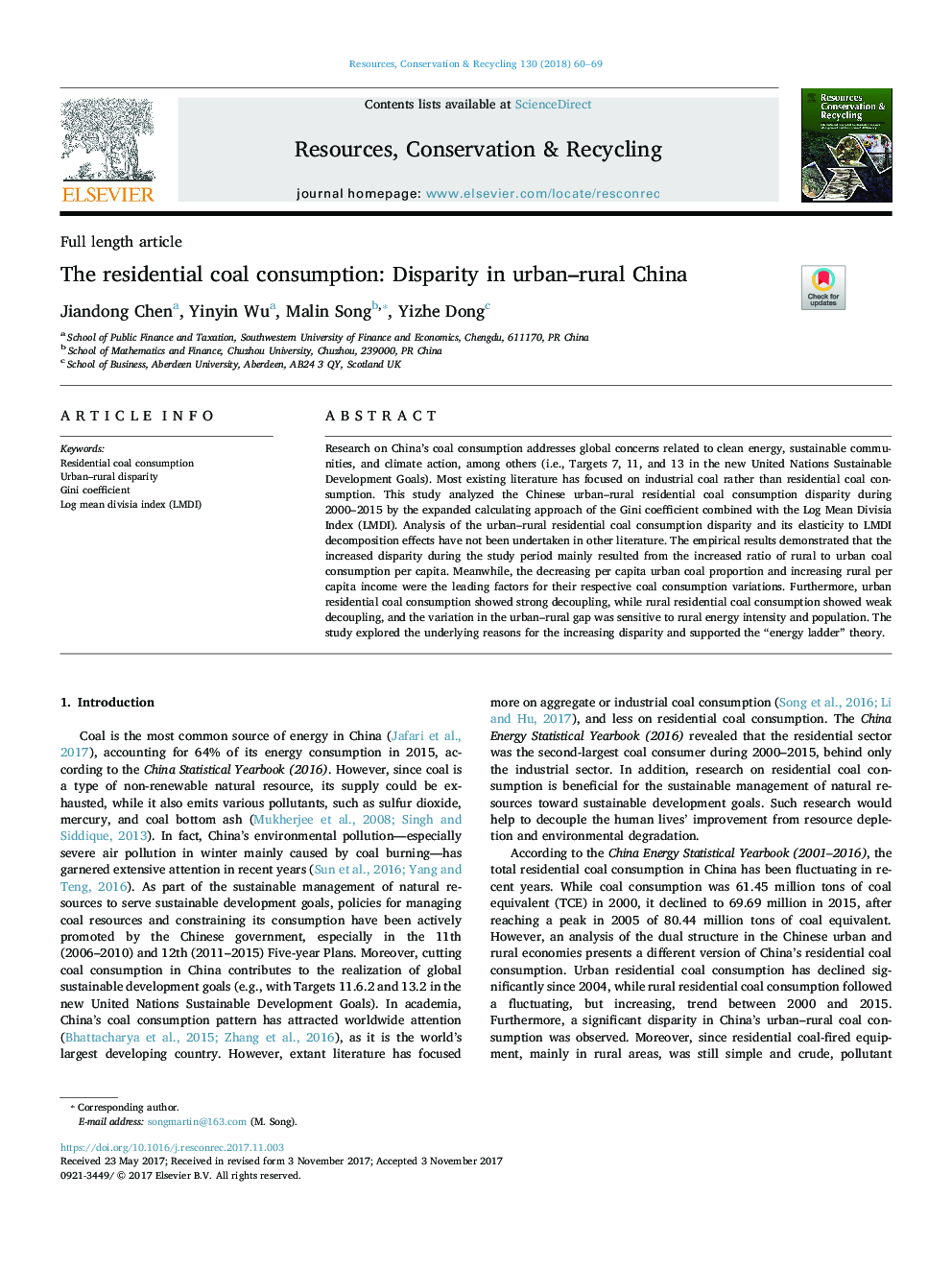| Article ID | Journal | Published Year | Pages | File Type |
|---|---|---|---|---|
| 7494419 | Resources, Conservation and Recycling | 2018 | 10 Pages |
Abstract
Research on China's coal consumption addresses global concerns related to clean energy, sustainable communities, and climate action, among others (i.e., Targets 7, 11, and 13 in the new United Nations Sustainable Development Goals). Most existing literature has focused on industrial coal rather than residential coal consumption. This study analyzed the Chinese urban-rural residential coal consumption disparity during 2000-2015 by the expanded calculating approach of the Gini coefficient combined with the Log Mean Divisia Index (LMDI). Analysis of the urban-rural residential coal consumption disparity and its elasticity to LMDI decomposition effects have not been undertaken in other literature. The empirical results demonstrated that the increased disparity during the study period mainly resulted from the increased ratio of rural to urban coal consumption per capita. Meanwhile, the decreasing per capita urban coal proportion and increasing rural per capita income were the leading factors for their respective coal consumption variations. Furthermore, urban residential coal consumption showed strong decoupling, while rural residential coal consumption showed weak decoupling, and the variation in the urban-rural gap was sensitive to rural energy intensity and population. The study explored the underlying reasons for the increasing disparity and supported the “energy ladder” theory.
Keywords
Related Topics
Physical Sciences and Engineering
Energy
Renewable Energy, Sustainability and the Environment
Authors
Jiandong Chen, Yinyin Wu, Malin Song, Yizhe Dong,
